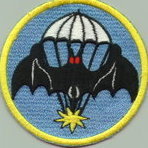Leaderboard
Popular Content
Showing content with the highest reputation on 08/25/2018 in all areas
-
On his 74th birthday, a man got a gift certificate from his wife. The certificate paid for a visit to a medicine man living on a nearby reservation that was rumored to have a wonderful cure for erectile dysfunction. After being persuaded, he drove to the reservation, handed his ticket to the medicine man, and wondered what he was in for. The medicine man slowly, methodically produced a potion, handed it to him, and with a grip on his shoulder, warned, 'This is powerful medicine. It must be respected. You take only teaspoonful, and then say '1-2-3.' When you do that, you will become manlier than you have ever been in your life, and you can perform as long as you want." The old man was encouraged. As he walked away, he turned and asked, "How do I stop the medicine from working?" "Your partner must say '1-2-3-4,'" he responded, "but when she does, the medicine will not work again until next full moon." The old man was very eager to see if it worked so he went home, showered, shaved, took a spoonful of the medicine, and then invited his wife to join him in the bedroom. When she came in, he took off his clothes and said, "1-2-3!" Immediately, he was the manliest of men. His wife was excited and began throwing off her clothes, and then she asked, "What was the 1-2-3 for?" And that, boys and girls, is why we should never end our sentences with a preposition, because we could end up with a dangling participle.1 point
-
On this day in 1954, marked the first flight of the C-130 Hercules! On this day, 23 August 1954, Lockheed pilots Stanley Beltz and Roy Wimmer flew the Hercules YC-130 transport on its first flight. Background and requirements The Korean War showed that World War II-era piston-engine transports—Fairchild C-119 Flying Boxcars, Douglas C-47 Skytrains and Curtiss C-46 Commandos—were no longer adequate. Thus, on 2 February 1951, the United States Air Force issued a General Operating Requirement (GOR) for a new transport to Boeing, Douglas, Fairchild, Lockheed, Martin, Chase Aircraft, North American, Northrop, and Airlifts Inc. The new transport would have a capacity of 92 passengers, 72 combat troops or 64 paratroopers in a cargo compartment that was approximately 41 feet (12 m) long, 9 feet (2.7 m) high, and 10 feet (3.0 m) wide. Unlike transports derived from passenger airliners, it was to be designed specifically as a combat transport with loading from a hinged loading ramp at the rear of the fuselage. A key feature was the introduction of the Allison T56 turboprop powerplant, which was developed for the C-130. At the time, the turboprop was a new application of gas turbines, which offered greater range at propeller-driven speeds compared to pure turbojets, which were faster but consumed more fuel. They also produced much more power for their weight than piston engines. Design phase The Hercules resembled a larger four-engine brother to the C-123 Provider with a similar wing and cargo ramp layout that evolved from the Chase XCG-20 Avitruc, which in turn, was first designed and flown as a cargo glider in 1947.[5] The Boeing C-97 Stratofreighter also had a rear ramp, which made it possible to drive vehicles onto the plane (also possible with forward ramp on a C-124). The ramp on the Hercules was also used to airdrop cargo, which included low-altitude extraction for Sheridan tanks and even dropping large improvised "daisy cutter" bombs. The new Lockheed cargo plane design possessed a range of 1,100 nmi (1,270 mi; 2,040 km), takeoff capability from short and unprepared strips, and the ability to fly with one engine shut down. Fairchild, North American, Martin, and Northrop declined to participate. The remaining five companies tendered a total of ten designs: Lockheed two, Boeing one, Chase three, Douglas three, and Airlifts Inc. one. The contest was a close affair between the lighter of the two Lockheed (preliminary project designation L-206) proposals and a four-turboprop Douglas design. The Lockheed design team was led by Willis Hawkins, starting with a 130-page proposal for the Lockheed L-206.[6]Hall Hibbard, Lockheed vice president and chief engineer, saw the proposal and directed it to Kelly Johnson, who did not care for the low-speed, unarmed aircraft, and remarked, "If you sign that letter, you will destroy the Lockheed Company."[6] Both Hibbard and Johnson signed the proposal and the company won the contract for the now-designated Model 82 on 2 July 1951.[7] The first flight of the YC-130 prototype was made on 23 August 1954 from the Lockheed plant in Burbank, California. The aircraft, serial number 53-3397, was the second prototype, but the first of the two to fly. The YC-130 was piloted by Stanley Beltz and Roy Wimmer on its 61-minute flight to Edwards Air Force Base; Jack Real and Dick Stanton served as flight engineers. Kelly Johnson flew chase in a Lockheed P2V Neptune.[8] After the two prototypes were completed, production began in Marietta, Georgia, where over 2,300 C-130s have been built through 2009.[9] The initial production model, the C-130A, was powered by Allison T56-A-9 turboprops with three-blade propellers and originally equipped with the blunt nose of the prototypes. Deliveries began in December 1956, continuing until the introduction of the C-130B model in 1959. Some A-models were equipped with skis and re-designated C-130D. As the C-130A became operational with Tactical Air Command (TAC), the C-130's lack of range became apparent and additional fuel capacity was added with wing pylon-mounted tanks outboard of the engines; this added 6,000 lb of fuel capacity for a total capacity of 40,000 lb.1 point

